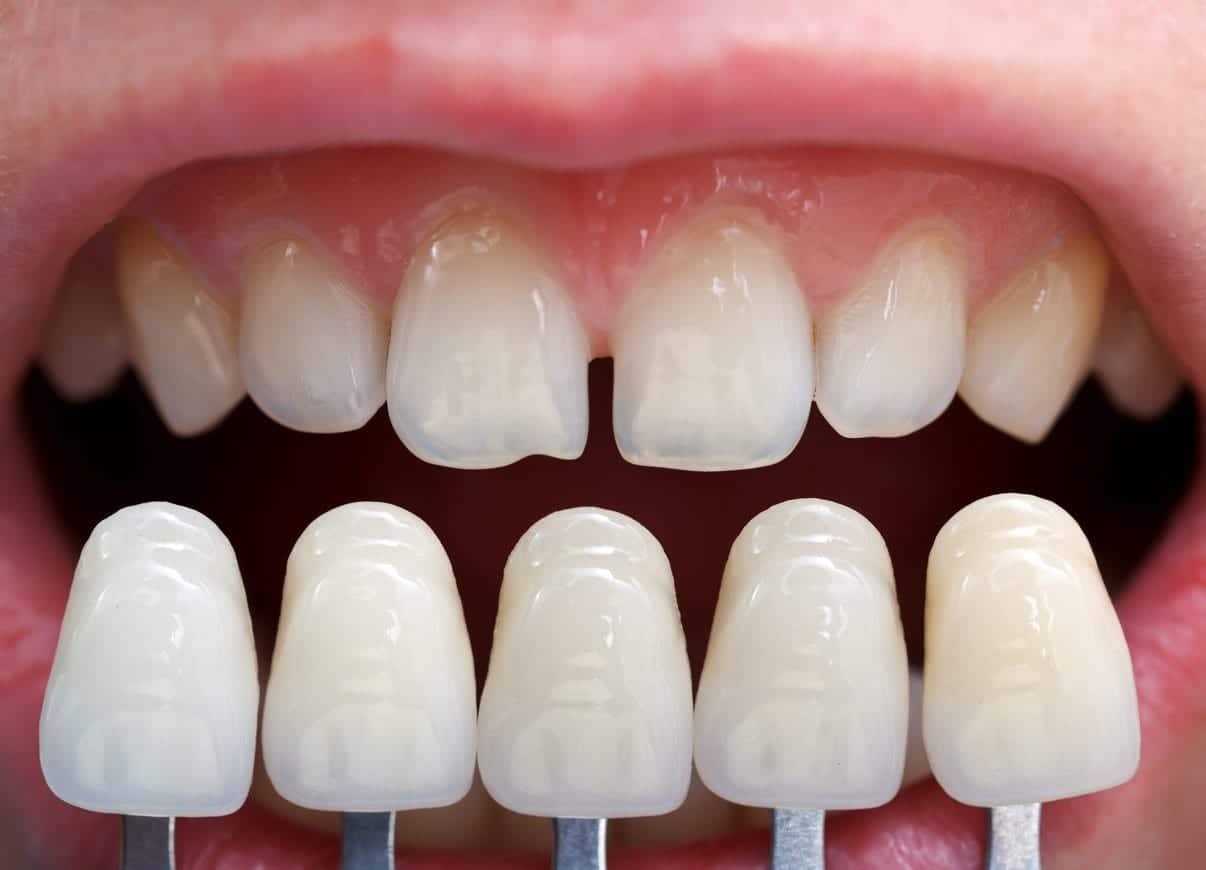
Dental veneers are a thin covering designed to restore and strengthen the teeth you already have. If you are looking into different cosmetic procedures for a brighter and better-aligned smile, you should definitely look into veneers before making your decision.
Dental veneers can help with the following:
Discoloration or Decay – Discoloration can be caused by a number of things, including root canals, drinking coffee or red wine, smoking, resin fillings, and so on. If discoloration is the primary reason you are choosing to visit a cosmetic dentist then veneers are a great option.
Veneers are made from thin materials, so they can easily cover the front of your teeth without impacting how they feel.
Asymmetrical or Broken Teeth – Veneers can be custom made to fit over your existing teeth to make them look even and natural. Many patients will get veneers in order to make a tooth on one side of their mouth similar in size or shape to another.
Gaps – Similarly, dental veneers can be custom made to fill gaps between teeth.
Moderately Crowded Teeth – Veneers can also treat the opposite condition – crowded teeth. While this will depend greatly upon the alignment and shape of your teeth, veneers may be able to straighten the teeth that are crowding each other.
What Is the Process for Getting Veneers?

Veneers can be applied quickly and painlessly in two quick procedures, and typically involve three simple steps:
Consultation – Since this is a cosmetic procedure, you will have to sit down with your dental care professional and discuss your desired results. There is a big difference between veneers applied to correct discoloration than those being applied to fill gaps or create asymmetry.
This consultation may also include a quick dental examination or x-rays. Your dentist may need to make molds of your teeth during your consultation as well.
Prep – To prepare your teeth for the veneer, your dentist may have to remove about a ½ millimeter of enamel (more or less depending on your cosmetic goals) from the front of your teeth. You may or may not need a local anesthetic to keep the area numb during the process. After the enamel is removed, your dentist may make a second impression of your teeth to send to the laboratory that will customize your veneers.
Application – When your veneers arrive (approximately a week or two after they are sent to the laboratory) your dentist will most likely first place the veneers on your teeth to make sure they will fit and look natural on top of your current teeth. Some trimming of the veneers or adjustment of the cement color may be required.
When the veneer is ready for permanent application, your teeth will be cleaned and etched (marked slightly) to ensure the best bondage between your teeth and the veneers.
Your dentist will then evaluate the fit and look of your veneers, and remove any excess cement if necessary. A follow-up appointment may be recommended but is not usually required.
The Different Types of Veneers

Veneers are typically made of porcelain or resin composite materials. While resin veneers are thinner and sometimes require less tooth removal, porcelain veneers are extremely durable and resist stains better than resin materials. Porcelain veneers also look more like natural teeth by the way they reflect light. Overall, they have a more natural appearance and can maintain this appearance longer than resin veneers.
This is why South Florida Dental Care offers only the best in porcelain veneers to patients who are looking for a lightweight and quick solution to their cosmetic needs. Whether years of coffee and cigarettes have caused discoloration, or an accident created a large chip in your front tooth, veneers may be the best option to restore your beautiful smile.






